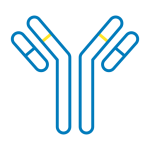Warning: Invalid argument supplied for foreach() in /home/starvict/abscience.com.tw/wp-content/themes/wp-abs/single-product.php on line 28
 Anti-Ryanodine Receptor 2
Anti-Ryanodine Receptor 2
arr-002
25 µl 50 µl 0.2 ml
Brand
Warning: Invalid argument supplied for foreach() in /home/starvict/abscience.com.tw/wp-content/themes/wp-abs/single-product.php on line 76
Description
It is well established that cytosolic calcium (Ca2+) acts as a key second messenger in many intracellular pathways including synaptic transmission, muscle contraction, hormonal secretion, cell growth and proliferation.1,2 The primary intracellular Ca2+ storage/release organelle in most cells is the endoplasmic reticulum (ER) or the sarcoplasmic reticulum (SR) in striated muscle cells.
The ER and SR contain two Ca2+ release channels families, the Inositol trisphosphate receptors (IP3Rs) and the Ryanodine receptors (RyRs).3
The Ryanodine receptor family consists of three different isoforms: The skeletal muscle isoform, Ryanodine Receptor type 1 (RyR1); the cardiac muscle isoform, Ryanodine Receptor type 2 (RyR2) and the brain isoform, Ryanodine Receptor type 3 (RyR3).3 The Ryanodine receptors are homotetrameric proteins. They play a key role in the mechanism of excitation-contraction coupling in striated muscle. Binding of Ryanodine to the Ryanodine Receptor causes to two major changes in the channel: a reduction in single-channel conductance and a marked increase in open state probability.
RyR2 serves as an intracellular Ca2+ channel in the SR membrane. It is predominantly expressed in cardiac muscle where it plays a central role in cardiac excitation-contraction coupling. RyR2 is also expressed in the brain. 1-4
Application
IPWB
Reactivity
HumanMouse







